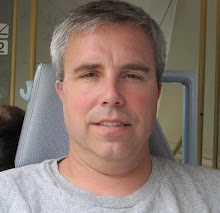Due to our short stay (had a late start, had a sit down lunch in Leipzig, the weather was very cold (not the best for outside sightseeing), and we had to be back to pick up Noah from his ski trip) so we didn’t get to see everything.
We didn’t get to see the new city hall and we couldn’t see the Battle of the Nations monument, one of the sites I really wanted to see, as this was the first loss for Napolean and the furthest west he went during his conquest (after this loss Napoleon’s troops were moved back and this battle was the beginning of the end, so Leipzig is the point at which he was stopped); the monument is Europe’s largest monument (a controversial claim according to David and Melissa); next time.
For more on Leipzig see:
http://en.wikipedia.org/wiki/Leipzig
Stasi - short for the Ministry of State Security - the secret service of the DDR (GDR)
Stasi exhibition at the “Runde Ecke” museum was our first stop after a cold brisk walk. The stasi museum housed the Leipzig STASI (secret police) headquarters until 1989. It was one of the focal points during the Monday Demonstrations which lead the way to the peaceful revolution and the German reunification. This was a very scary place and the Stasi, secret police, were the unchecked secret service and enforcers of the people during the DDR years. For more on the Stasi see the following link:
http://en.wikipedia.org/wiki/Stasi
Growing up as a kid I always thought about what it would be like living in the DDR; seemed too close to Orwell’s 1984. I remember thinking it was sad that there were places where I couldn’t visit and thinking how confined/limited the people of the must have been. Visiting the Stasi museum really brought this home and how hard and unlikely it was for them to actually succeed in ousting the DDR, and in a peaceful manner. I remember seeing the wall fall, with the people on it knocking it down, thinking what a miracle this was and never imaging that this could happen without some sort of war. I think most Americans, like me, felt proud of the East Germans in 1989. It was really special being in the place where this took place; the start of the fall of the DDR, imagining the risks that these people were taking.
http://en.wikipedia.org/wiki/Monday_demonstrations_in_GDR
A wall plaque in the stasi museum, the German long name for the Stasi can be seen on the shield:
The “Runde Ecke” (round corner) was the actual headquarters for the stasi during the DDR years, and I could stop thinking what happened in this building, and how in the DDR years I would have never been able to step into this building, let alone in the DDR. For non-stasi East Germans going to this building mean serious investigations and accusations and other implications of crimes by the Stasi.
The stasi tapped and recorded conversations of the East German citizens, here is some of the early equiptment they used and the tapes of those conversations. Most of the tapes were confiscated tapes sent into the DDR by families from the outside. The Stasi would record over the confiscated tapes; it was interesting seeing all the different pre-recorded titles that were overwritten:

Some of the listening devices used by the Stasi:
One really interesting themes was that the Stasi would destroy documents to cover their trails, so some of the most compelling evidence was from 1989, before they could destroy the documents, the current investigations in the works. One that particularly stood out was a collection of a young boys school essays. He was questioning some of the things about the DDR, the cars; overpriced and of low quality why couldn’t they buy better cars like in the west and other restrictions. They had each of the different papers and documentation from the Stasi that indicated that this boy was to be flagged and rejected from going to the college track high school because of his essays he wrote; questioning the government. As it happened this was in late 1989 and the government fell just before these actions took place.










No comments:
Post a Comment